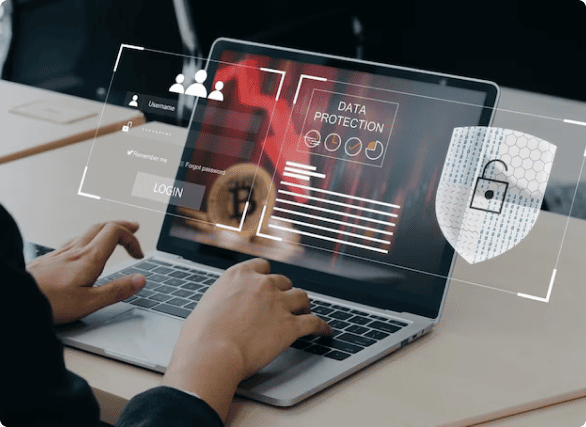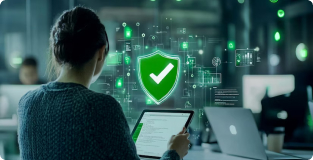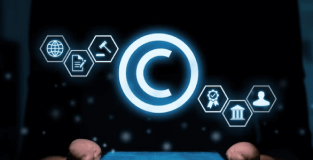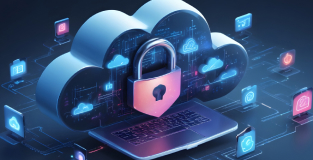
How do you handle the security concerns in Web applications
As software as a service (SaaS) applications continue to grow in popularity, so do the security concerns around them. While SaaS offers organizations a great deal of flexibility and convenience, it often raises questions around data security.
In this blog post, we'll discuss how to handle the security concerns in SaaS applications.
Understanding SaaS Security Risks
The first step in handling security concerns in SaaS applications is to understand the risks involved. Here are some of the most common risks:
-
Unauthorized Access: One of the biggest risks with SaaS applications is unauthorized access. This risk can come from both external and internal sources. Hackers may be able to gain access to sensitive data stored by a SaaS provider, while internal employees could potentially misuse their access privileges.
-
Data Breaches: SaaS applications store a significant amount of sensitive data. In the event of a data breach, customer and company data could be compromised. Data breaches can take many forms, including hacking attacks, phishing scams, and other types of cybercrime. According to IBM's Cost of a Data Breach report, businesses lose an average of $3.92 million due to data breaches.
-
Integration Risks: SaaS applications often need to integrate with other systems within an organization. This integration can present a security risk if not done properly. For example, if a third-party system used by a SaaS provider is compromised, this could potentially impact the SaaS application and its users.
-
Insecure APIs: SaaS applications often rely on application programming interfaces (APIs) to communicate with other systems. If these APIs are not secured properly, they can be exploited by attackers. According to a survey from Bitglass, 82% of organizations believe that security concerns are hindering their adoption of cloud and SaaS apps.
Steps for Handling SaaS Security Concerns
With an understanding of the risks involved, here are some steps you can take to handle SaaS security concerns:
-
Evaluate the SaaS Provider: Before deciding to use a SaaS provider, it's important to evaluate their security practices. Find out what security measures they have in place to protect your data, and ensure that they have proper certifications and compliance guidelines.
"Businesses must educate themselves, their employees, and consumers about the risks associated with cloud computing and take steps to reduce those risks," says Michael Kaiser, executive director of the National Cyber Security Alliance.
-
Use Multi-Factor Authentication: One way to reduce the risk of unauthorized access is to use multi-factor authentication. This requires users to provide more than one form of authentication, such as a password and a token. By requiring more than one form of identification, you can ensure that only authorized personnel have access to the SaaS application and its data. According to Gartner, more than 80% of publicly known security breaches involve stolen, weak, or default passwords.
-
Encrypt Data in Transit and at Rest: Encryption is an effective way to protect sensitive data. Data should be encrypted both in transit, as it travels between systems, and at rest, when it's stored on servers. By encrypting data, you can limit the risk of data breaches.
-
Use Third-Party Security Tools: Third-party security tools can help you monitor and protect your SaaS applications. These tools can provide additional layers of security, such as intrusion detection and prevention, firewall protection, and vulnerability scanning. "SaaS applications can introduce vulnerabilities into a company’s technology ecosystem that may not be detected without thorough testing," says Sylvia Lee, CEO of security software provider Freedom of the Press Foundation.
Conclusion
SaaS applications provide many benefits to organizations, but they also come with significant security risks. By understanding these risks and implementing best practices, you can ensure that your SaaS applications and data stay secure. The steps above are just a starting point – it's important to stay up-to-date on new threats and vulnerabilities as they emerge, and to adapt your security practices accordingly.
Key Takeaways: Remember, it's important to educate yourself and your employees about SaaS security concerns to reduce the risks. Invest in robust security measures, such as encryption, multi-factor authentication, access log monitoring, and third-party security tools to protect your data. Implementing these measures will help you navigate the world of SaaS applications with confidence.
Related Blogs

The Ultimate Guide to SOC 2 Compliance for SaaS Companies

SaaS applications on SOC 2 compliance

The Future of SaaS Security: Building Trust and Resilience in the Cloud
Let's discuss your project